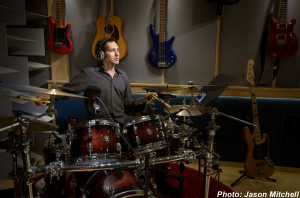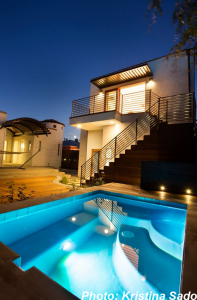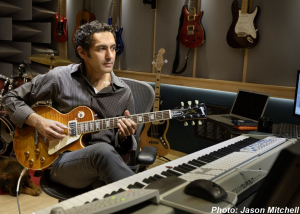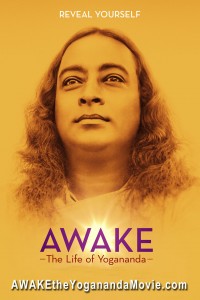 Vivek Maddala’s story is one that certainly does not lack one single ounce of excitement. From being a successful [modern-day] composer of music for film and TV, to his recent build out of a new state-of-the-art home studio, Vivek has continued to deliver world-class music on his own terms. He has always been on the vanguard of hip new projects, but now with the new studio, the sky is the limit for this seasoned – yet still young Los Angeles multi-instrumentalist/producer.
Vivek Maddala’s story is one that certainly does not lack one single ounce of excitement. From being a successful [modern-day] composer of music for film and TV, to his recent build out of a new state-of-the-art home studio, Vivek has continued to deliver world-class music on his own terms. He has always been on the vanguard of hip new projects, but now with the new studio, the sky is the limit for this seasoned – yet still young Los Angeles multi-instrumentalist/producer.
 One might ask, “What is it that keeps him so busy writing and producing for such interesting projects?” Well for starters, very few people can pull together the diverse musical elements that seem to come so fluently for Maddala. On one end of the spectrum he is an extremely proficient musician, and on the other he is an expressive individual who seems to be able to tap into emotional components of film while gracefully tying everything together with unique global soundscapes. He also seems to land projects right in his wheelhouse; ones that lift the human spirit and elucidate the human condition. His works which have been noted extraordinarily diverse in style, stand out among contemporary compositions for their depth of expression, brilliance of sound, and profoundly humanist nature. It’s in this pocket where he has found so much success and respect scoring a plethora of [major] independent films.
One might ask, “What is it that keeps him so busy writing and producing for such interesting projects?” Well for starters, very few people can pull together the diverse musical elements that seem to come so fluently for Maddala. On one end of the spectrum he is an extremely proficient musician, and on the other he is an expressive individual who seems to be able to tap into emotional components of film while gracefully tying everything together with unique global soundscapes. He also seems to land projects right in his wheelhouse; ones that lift the human spirit and elucidate the human condition. His works which have been noted extraordinarily diverse in style, stand out among contemporary compositions for their depth of expression, brilliance of sound, and profoundly humanist nature. It’s in this pocket where he has found so much success and respect scoring a plethora of [major] independent films.
 Building off from his busy schedule — currently scoring a feature film, producing two albums, and soon scoring a TV series — it became clear to Vivek that he needed his own production sanctuary to work at any given moment of need or inspiration. Now, when figuring out how to build a so-called “home project studio,” it doesn’t hurt to have attended the Berklee School of Music, and also to have degrees in Electrical Engineering from major universities. That is when one’s “project studio” usually takes a turn for the better. 😉 Combining his skills and background in electro-acoustics, Vivek turned to acoustics consultant Kevin Lee Hughes who had recently worked on design for Capitol Studios in LA. The result was a stunningly beautiful and intricate professional work-space written about here in this month’s issue of Mix Magazine.
Building off from his busy schedule — currently scoring a feature film, producing two albums, and soon scoring a TV series — it became clear to Vivek that he needed his own production sanctuary to work at any given moment of need or inspiration. Now, when figuring out how to build a so-called “home project studio,” it doesn’t hurt to have attended the Berklee School of Music, and also to have degrees in Electrical Engineering from major universities. That is when one’s “project studio” usually takes a turn for the better. 😉 Combining his skills and background in electro-acoustics, Vivek turned to acoustics consultant Kevin Lee Hughes who had recently worked on design for Capitol Studios in LA. The result was a stunningly beautiful and intricate professional work-space written about here in this month’s issue of Mix Magazine.
We recently got a chance to quickly catch up with Vivek and find out how he’s been using SONAR:
Cakewalk: What does a typical writing session in SONAR look like in your world?
Vivek Maddala: For me, writing and recording often happen at the same time. They’re usually not separate activities in my work. An exception would be when I’m mocking up orchestral parts that I’ll later replace with a live orchestra. Hence, the size and scope of writing sessions can vary quite a bit. I’ve written huge orchestral scores that have over 300 tracks (combinations of MIDI and audio) comprising strings, woodwinds, brass, percussion, voices, piano, etc., organized into track folders, with 20-30 busses for instrument groups and FX sends. I’ve also written intimate small ensemble music or singer/songwriter material  comprising only a few tracks and 3-4 busses. So I suppose it’s fair to say I don’t have a “typical” SONAR session. The nature of my work is such that the look of each session can vary wildly.
comprising only a few tracks and 3-4 busses. So I suppose it’s fair to say I don’t have a “typical” SONAR session. The nature of my work is such that the look of each session can vary wildly.
Whenever possible (meaning most of the time) I try to avoid using virtual instruments other than for mock-ups. However, given budget constraints, I do often find myself using at least a handful of virtual instruments along with live ones. I rely quite heavily on Vienna Ensemble Pro (VE Pro), as a VSTi in SONAR, to “host” many instances of Kontakt player, GPlayer (for legacy Gigastudio libraries), Omnisphere, etc. My main DAW has 32 GB of RAM at the moment, although I imagine I’ll need to upgrade that at some point. I love the Spitfire Sable string libraries, as I’m quite drawn to the “immediate” and charming sound of small string ensembles—in this case, and augmented triple string quartet (4,3,3,3)—so I use it quite a bit.
For electric guitars, if I’m not mic’ing an actual amp,  I’ve been using the S-Gear Scuffham amps, which I think sounds as accurate as I’ve heard from a virtual setup (and plays fairly realistically). For effects, I use UAD plug-ins quite a bit (with a dedicated PCIe DSP card by UAD), along with Soundtoys plug-ins (like EchoBoy) and various custom convolution IRs. I’ve gotten rid of most of my outboard gear (like old Lexicon reverbs and hardware compressors), although I do still have a couple of amazing LA-2A style optical compressors and a smattering of other crucial outboard units.
I’ve been using the S-Gear Scuffham amps, which I think sounds as accurate as I’ve heard from a virtual setup (and plays fairly realistically). For effects, I use UAD plug-ins quite a bit (with a dedicated PCIe DSP card by UAD), along with Soundtoys plug-ins (like EchoBoy) and various custom convolution IRs. I’ve gotten rid of most of my outboard gear (like old Lexicon reverbs and hardware compressors), although I do still have a couple of amazing LA-2A style optical compressors and a smattering of other crucial outboard units.
I’m fortunate to have a great selection of mics and mic preamps, so these tools coupled with a solid DAW and great plug-ins has creates a marvelous working environment for me. And I’m thrilled to be able to use them in my new studio, which is acoustically outstanding and an ideal space in which to work.
Cakewalk: What keeps you on SONAR with so many other choices out there?
Vivek Maddala: I’ve been using Sonar for years, and it feels like an extension of me. I started using Cakewalk MIDI sequencing software when I was in college in the mid-1990s, and have always found it to be extremely intuitive, yet powerful. It simply does exactly what I want it to do. In the early days, I used Cakewalk for MIDI and Pro Tools (on a separate machine) for audio, and I locked the transports together using SMPTE time code. When Cakewalk  (the software) evolved into SONAR, I was quite pleased with how the company was keenly aware of the needs of its users and vastly improved the audio engine—to the point where I found myself using Pro Tools less and less for audio, and SONAR more and more. As I recall, SONAR was the first native 64-bit DAW. Now, I do everything in Sonar (except I still run video on Pro Tools due to a peculiar setup to which I’ve grown accustomed over the years). I’ve been dabbling in Steinberg’s Cubase, which is also great, but I keep coming back to SONAR because it’s so powerful while being intuitive. With a good front end, I’ve found that SONAR sounds amazing. I actually like the sound of my SONAR rig (with 36 I/O RME hardware) better than my Pro Tools HD rig with the 192 I/O.
(the software) evolved into SONAR, I was quite pleased with how the company was keenly aware of the needs of its users and vastly improved the audio engine—to the point where I found myself using Pro Tools less and less for audio, and SONAR more and more. As I recall, SONAR was the first native 64-bit DAW. Now, I do everything in Sonar (except I still run video on Pro Tools due to a peculiar setup to which I’ve grown accustomed over the years). I’ve been dabbling in Steinberg’s Cubase, which is also great, but I keep coming back to SONAR because it’s so powerful while being intuitive. With a good front end, I’ve found that SONAR sounds amazing. I actually like the sound of my SONAR rig (with 36 I/O RME hardware) better than my Pro Tools HD rig with the 192 I/O.
Cakewalk: What are some of your most recent projects on SONAR and how was it used?
Vivek: Currently, I have a number of active projects on which I use (or used) SONAR.  There’s a film in theaters right now called AWAKE, which I scored using SONAR. (It’s been kind of a surprise indie hit.) I’ve got four movies touring the festival circuit, which I scored using SONAR – Career Girl, The Ballad of Snake Oil Sam, ASHA, and The Parting Shot. There’s a documentary called American Revolutionary that recently won a Peabody Award, which I did in SONAR. (If you missed it in theaters or on TV, it’s stream-able now on Netflix, iTunes, and elsewhere.) Also, you can hear me perform (drums, guitars, keyboards, and bass) on a number of soundtracks by other composers listed on IMBD, where I recorded my parts in my studio using SONAR.
There’s a film in theaters right now called AWAKE, which I scored using SONAR. (It’s been kind of a surprise indie hit.) I’ve got four movies touring the festival circuit, which I scored using SONAR – Career Girl, The Ballad of Snake Oil Sam, ASHA, and The Parting Shot. There’s a documentary called American Revolutionary that recently won a Peabody Award, which I did in SONAR. (If you missed it in theaters or on TV, it’s stream-able now on Netflix, iTunes, and elsewhere.) Also, you can hear me perform (drums, guitars, keyboards, and bass) on a number of soundtracks by other composers listed on IMBD, where I recorded my parts in my studio using SONAR.
On the production side, I’m working on a delightful new album by The Oopsadasies using SONAR, and I’m producing tracks in SONAR for an amazing singer/songwriter named Bhavana Reddy. I’ve also been producing songs using SONAR for Oscar- and Grammy-nominated artist Stephen Bishop. Finally, I did pre-production work for Gingger Shankar’s new live show and tour using SONAR. In fact, for Gingger’s tour, we’re also working with Gibson guitars and will be doing a showcase at the Gibson Showroom in Beverly Hills soon. A Gibson-supplied Les Paul Standard is the main guitar we’re using on tour. It sounds and plays great, and it looks beautiful as well.
For more information on Vivek Maddala visit: http://www.maddala.com/
For more information on how SONAR can help you score music for media visit: www.cakewalk.com/sonar

